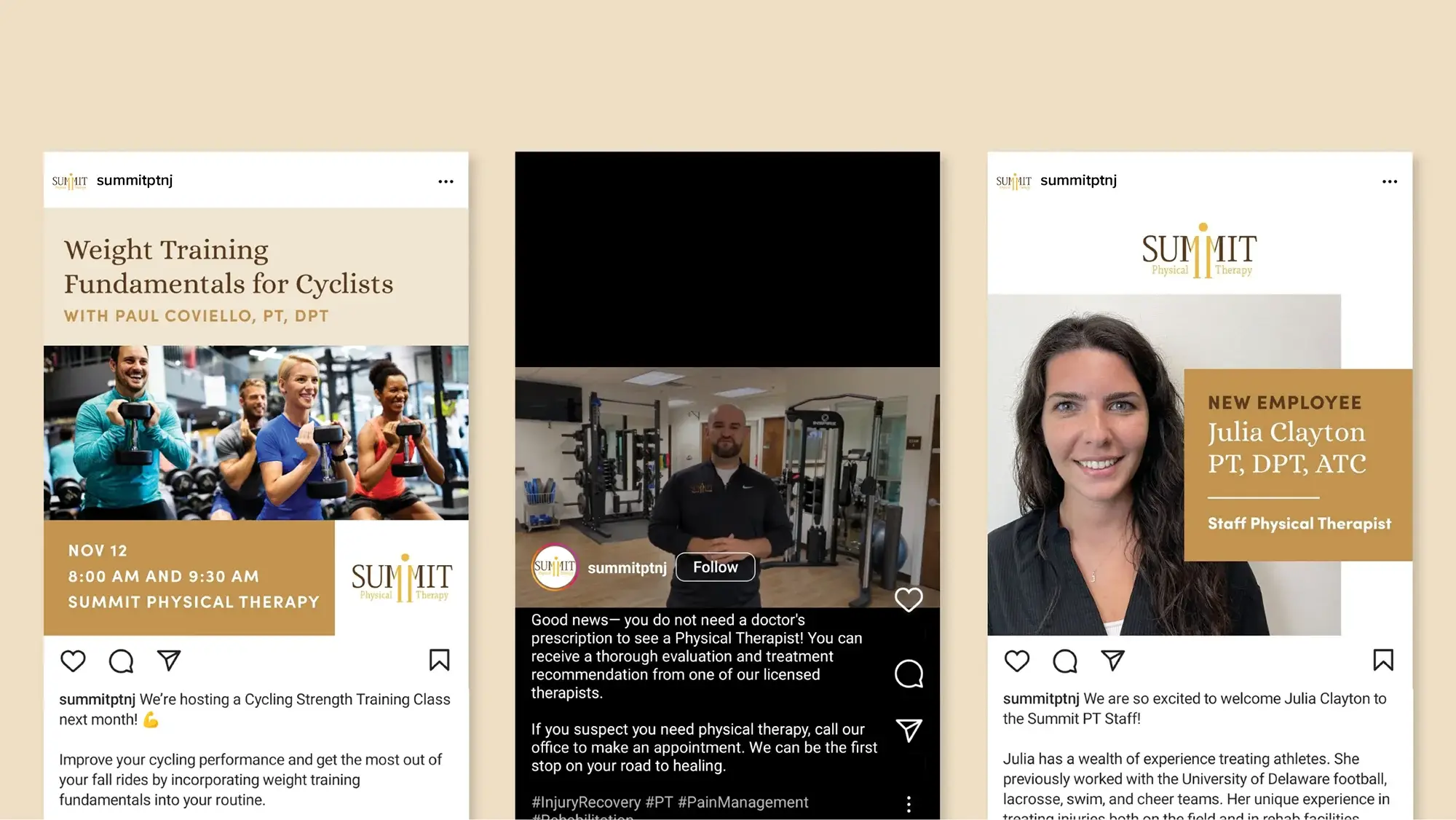There are nearly 3.5 billion active social media users on a countless number of different social platforms. Some of the most popular sites for businesses are Facebook, Twitter, LinkedIn, Instagram, and Pinterest, to name a few. So how should you decide which social media platforms are the best ones for your business? It is important to only focus your efforts on the channels that will align best with your audience and brand.
We work closely with Mulberry House Restaurant, a premier tea house located in Westfield, NJ, who centers their attention on Facebook and Instagram. We upload aesthetically-pleasing images of delicious English tea sandwiches and homemade baked goods. Meanwhile, Innowatts, an energy technology company, sees success from LinkedIn by posting industry-related articles and videos for their followers and targeted users.
It’s time to pick your channels!
If you can’t explain how or why a platform will help reach your goals, then you probably shouldn’t put effort in managing it. Nothing is worse than having a social media account on a platform that goes unused or becomes stagnant. Before looking deeper into your strategy, you should ask yourself the following five questions.
- Which platforms do my target customers use?
- Which networks align with my brand’s values?
- Which social media channels generate the most traffic to my website?
- Which sites are my competitors using?
- How many social accounts can I realistically manage?
Your answers above will help you establish your business objectives and turn them into social marketing goals. If you need a hand, we can help you weigh the pros and cons of each service and select the platforms that make the most sense for your product and/or service.
PROS
If there’s one platform your company should be on, it’s most likely Facebook. Facebook has the largest audience of all social media sites with 2.4+ billion users! Customers expect companies to be on this platform and you definitely want to be where people are looking for your business. Plus it’s great for search engine optimization (SEO) if you have a Facebook business page set up, because search engines prioritize Facebook over other social media platforms. Through Insights (Facebook’s analytical data), businesses can learn more about their audience including interests, behaviors, and demographics. Facebook’s Insights also has the most developed advertising platform (along with its sister network, Instagram) allowing you to efficiently target your chosen audience based on location, job titles, and more, with even the smallest of budgets!
CONS
It’s not surprising that some negatives come with having the largest audience on social media: organic reach has declined and younger audiences have started to move away from this platform. Unless you are willing to put some advertising dollars behind your Facebook efforts, you may not see the level of results you would hope for.
PROS
When a consumer wants to reach out to a company, they will typically turn to Twitter first. Small businesses and large corporations can respond to users quickly through this platform, even if they’re not being tagged directly—and it’s common for customer issues to be resolved over a simple direct message. Interaction is the key of the customer’s journey and this fast-moving, real-time, news-driven platform is the best place to do it.
CONS
With 5,787 tweets sent every second, it might be difficult to get your word out on Twitter. It’s also not the best platform to showcase visuals, so if imagery is vital to your brand, one of the image-heavy platforms listed below might be a better option.
PROS
LinkedIn is not overly saturated like Facebook and Twitter and it is the absolute best platform to reach professionals. Business-to-business (B2B) engagement is the main focus on LinkedIn. Business decision-makers use this channel most commonly to connect with industry leaders and potential customers. According to Forbes, “LinkedIn is one of the best platforms for generating leads and now makes up 46% of the social media traffic generated to company websites for B2B firms.”
CONS
LinkedIn is not as active as other sites and if you are a business-to-consumer (B2C) company, LinkedIn should likely not be a top priority.
PROS
What better way to sell products (or services) than through a platform used for consuming visual content? With the use of hashtags, direct messages, and more, it is easy to reach new customers on Instagram. Instagram is the most popular social media site among millennials, who are often the leading target demographic for businesses today.
CONS
The most recent algorithm changes have caused a massive decline in organic reach. Even if you’re following a certain brand, their content may not show up on your feed. Since Instagram focuses on visual content over text, generating new content is often costly and time consuming.
PROS
Through Pinterest’s hyperlinked pins, it’s relatively easy to drive traffic to your site. Not only are link clicks high, the shelf life of a pin is 30+ days—significantly longer than most social platforms. Pinterest also approaches organic reach much differently than other platforms; a user’s feed is determined by what they have searched on the site, as well as the amount of keywords in a post. Pinterest appeals to a very niche user, but if your company falls within the food, fashion, or lifestyle industries, and targets mainly women, this social media outlet is definitely for you!
CONS
As mentioned, Pinterest is a very niche platform, despite its large usage. Imagery is everything—and similarly to Instagram, if you don’t have the budget or time to allocate towards visual content, Pinterest should not be prioritized.
Need help?
Social media is a lot to digest—and it’s not always possible to handle it on your own. Trillion has experience working with both small teams and large brands and offers Social Media Management for your business. For more information, complete our contact form or give us a call at 908.219.4703.






